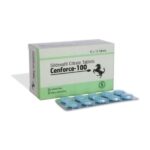Marketing campaigns involving influencers have gained significant traction, but determining their actual return on investment (ROI) can be complex. While these collaborations can drive engagement and brand awareness, businesses need to assess whether they translate into tangible benefits such as increased sales and customer loyalty.
By tracking key performance indicators (KPIs), analyzing audience interactions, and leveraging the right tools, brands can effectively measure ROI. This guide will help businesses evaluate campaign success and optimize their strategies for better outcomes.
Understanding ROI in Influencer Campaigns
Measuring ROI goes beyond simply calculating revenue. It involves assessing engagement, audience growth, website traffic, and the overall impact on brand reputation. Clear campaign objectives help businesses determine whether their influencer collaborations are truly effective.
Types of Influencers and Their Impact on ROI
Different types of influencers have varying effects on campaign performance. Mega influencers offer extensive reach, while micro-influencers often provide higher engagement rates. Choosing the right category depends on campaign goals—broad exposure or targeted conversions.
For example, an e-commerce brand looking for direct sales may benefit from micro-influencers who have a highly engaged audience. Meanwhile, a new product launch seeking maximum visibility might perform better with celebrity endorsements.
Key Metrics to Measure Campaign Success
Brands must track the right metrics to gauge the true effectiveness of their influencer initiatives. Some essential performance indicators include:
1. Engagement Rates
Measuring likes, comments, shares, and saves helps determine whether an influencer’s content resonates with their audience. Higher engagement often leads to better brand recall and trust.
2. Website Traffic and Click-Through Rates
Using tracking links, promo codes, or UTM parameters can help measure how much traffic an influencer directs to a website. A high click-through rate (CTR) suggests that the content is persuasive.
3. Conversion Rate and Sales Attribution
Businesses should analyze how many leads or purchases result from an influencer campaign. Unique discount codes and affiliate links make it easier to track direct conversions.
4. Audience Growth and Brand Sentiment
An increase in followers, subscriptions, or email sign-ups indicates successful brand exposure. Additionally, monitoring audience sentiment through social media can reveal whether an influencer’s endorsement positively affects the brand’s reputation.
5. Customer Acquisition Cost (CAC)
To evaluate cost efficiency, brands must compare the expenses of influencer collaborations with other marketing channels. Lower CAC suggests that influencer partnerships are an effective investment.
How to Track and Analyze Campaign Performance
1. Use Analytics Tools
Platforms like Google Analytics, social media insights, and influencer marketing software help track campaign results in real-time.
2. Implement UTM Links and Promo Codes
Custom tracking links and discount codes allow businesses to directly attribute sales and conversions to specific influencers.
3. Conduct A/B Testing
Testing different content styles, messaging approaches, and influencer partnerships can help identify the most effective strategies.
4. Monitor Long-Term Impact
Beyond immediate sales, brands should analyze repeat purchases, customer retention, and ongoing engagement to assess long-term value.
The Role of Influencer Advertising in ROI Measurement
Unlike organic collaborations, influencer advertising amplifies content through paid promotions. This strategy allows brands to retarget audiences, increase visibility, and gain deeper insights into performance metrics. By combining organic influencer content with paid campaigns, businesses can enhance ROI tracking and optimize their budgets more effectively.
Optimizing Influencer Strategies for Better ROI
To achieve the highest return on investment, brands should follow these best practices:
1. Choose the Right Influencers
Partner with influencers whose audience closely matches the brand’s target market. Authenticity and engagement matter more than follower count.
2. Prioritize High-Quality Content
Influencer marketing should focus on valuable, engaging content that aligns with brand messaging while maintaining authenticity.
3. Define Clear Campaign Goals
Setting measurable objectives—such as driving traffic, boosting engagement, or increasing sales—helps in evaluating campaign success.
4. Combine Organic and Paid Promotions
Using influencer advertising alongside organic content ensures better reach, engagement, and conversion tracking.
5. Continuously Improve Based on Data
Regularly analyzing campaign performance and adjusting strategies based on insights ensures long-term success.
How Digital Marketing Services Support ROI Measurement
Many brands rely on digital marketing services to streamline influencer marketing campaign tracking. These agencies provide expertise in performance analysis, influencer selection, and strategy optimization, ensuring that businesses maximize their investment.
Final Thoughts
Measuring the real ROI of influencer campaigns requires a strategic approach, clear KPIs, and continuous analysis. By focusing on engagement, conversions, and brand impact, businesses can refine their strategies for better outcomes.
Effective influencer partnerships—whether organic or through influencer marketing—should always be backed by data-driven decision-making. Leveraging the right tools and expert digital marketing services ensures that businesses can track, optimize, and maximize their influencer investments.








